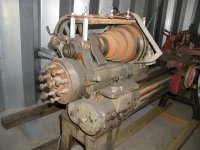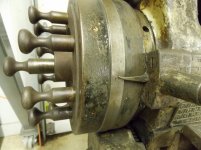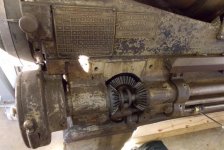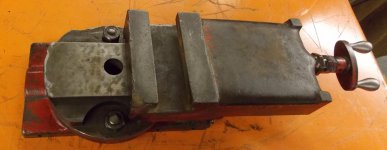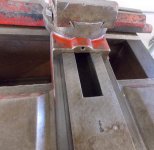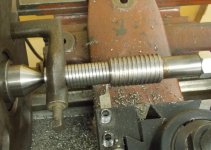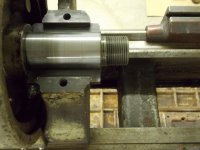The thread dial pinion for the Hamilton turned out pretty well. I used a gear cutter to gash the teeth a bit wider and deeper than the hob was supposed to cut. When I did that, the hob followed the gashes and because there was less material to remove, the hob stayed sharp longer.
Here is a picture of the finished hobs.

I used a dovetail cutter to cut the teeth, and a regular end mill to cut relief on the tops of the teeth. I ended up having to chase the threads of both hobs to clean up the flashing produced when the teeth were milled.
Initially I did not cut the gashes deep enough or wide enough. Here is what bad gashing looks like:
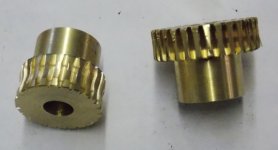
After I regashed the Hamilton pinion, I hobbed it in the lathe:
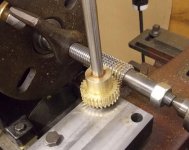
The fixture is just a block of steel with a piece of drill rod holding the pinion. There is a roller thrust bearing under the pinion to reduce some of the friction during hobbing.
Here is what the pinion looks like in the Hamilton:
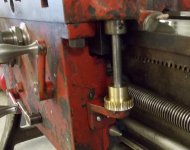
So, if I ever attempt gashing and hobbing again, I will follow the advice I gave in my previous post, and maybe things will work out better.
As a side note, the screw seen above and to the left of the lower thread dial bracket holds a spring and a plunger rod that fits into a detent on the half nut to keep it in position.

